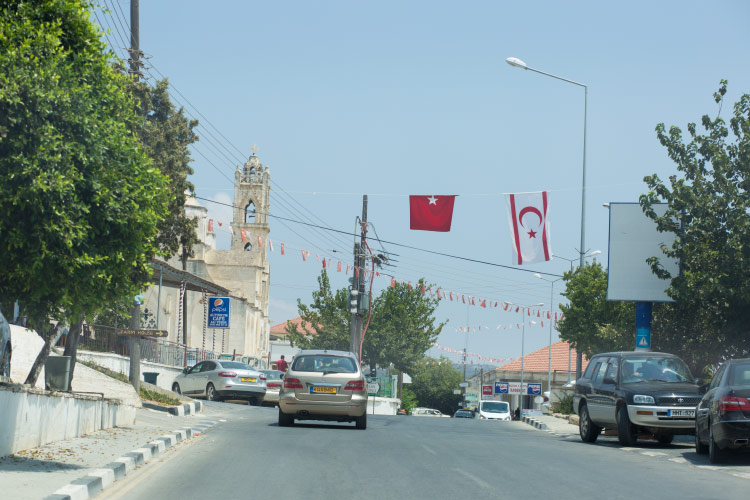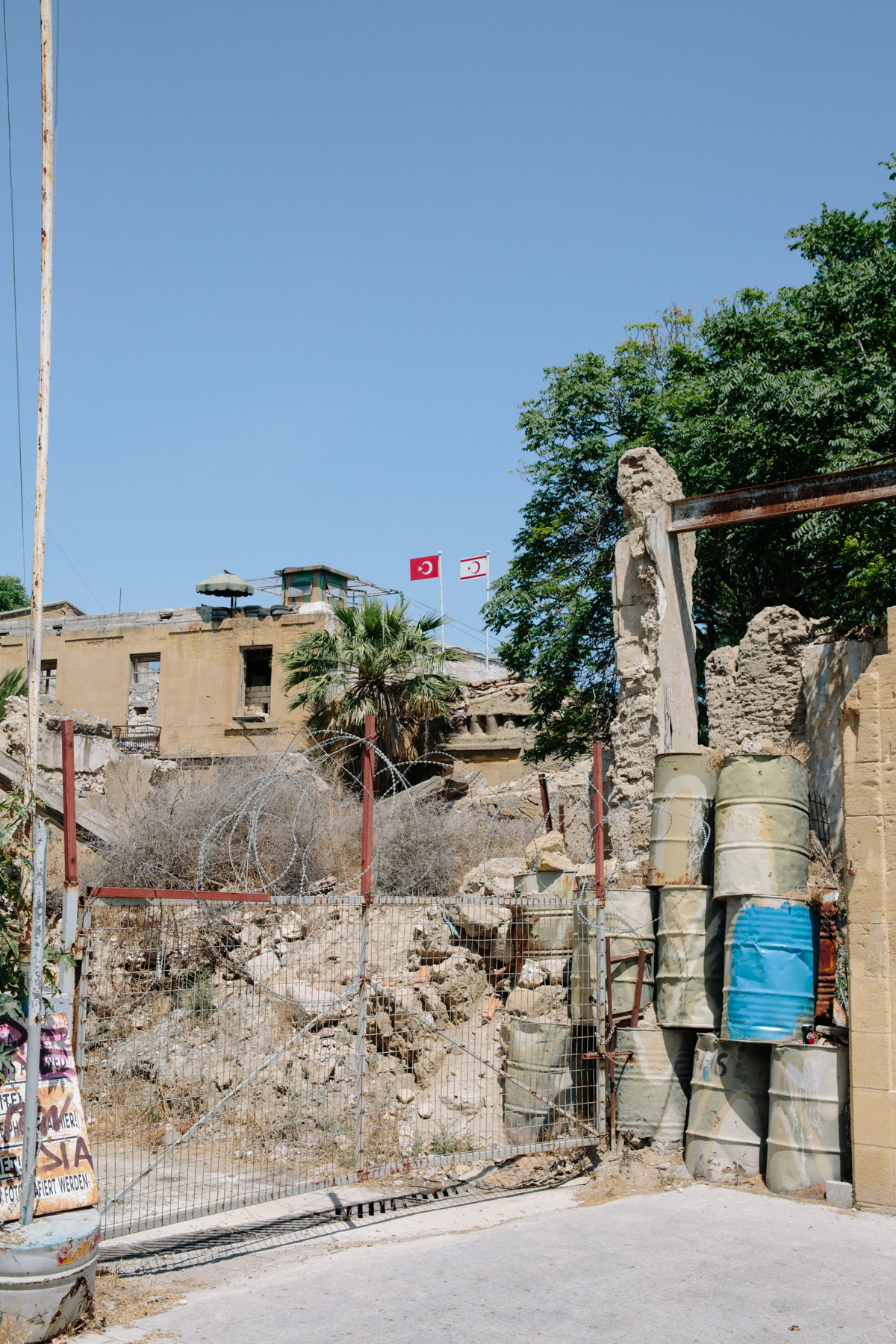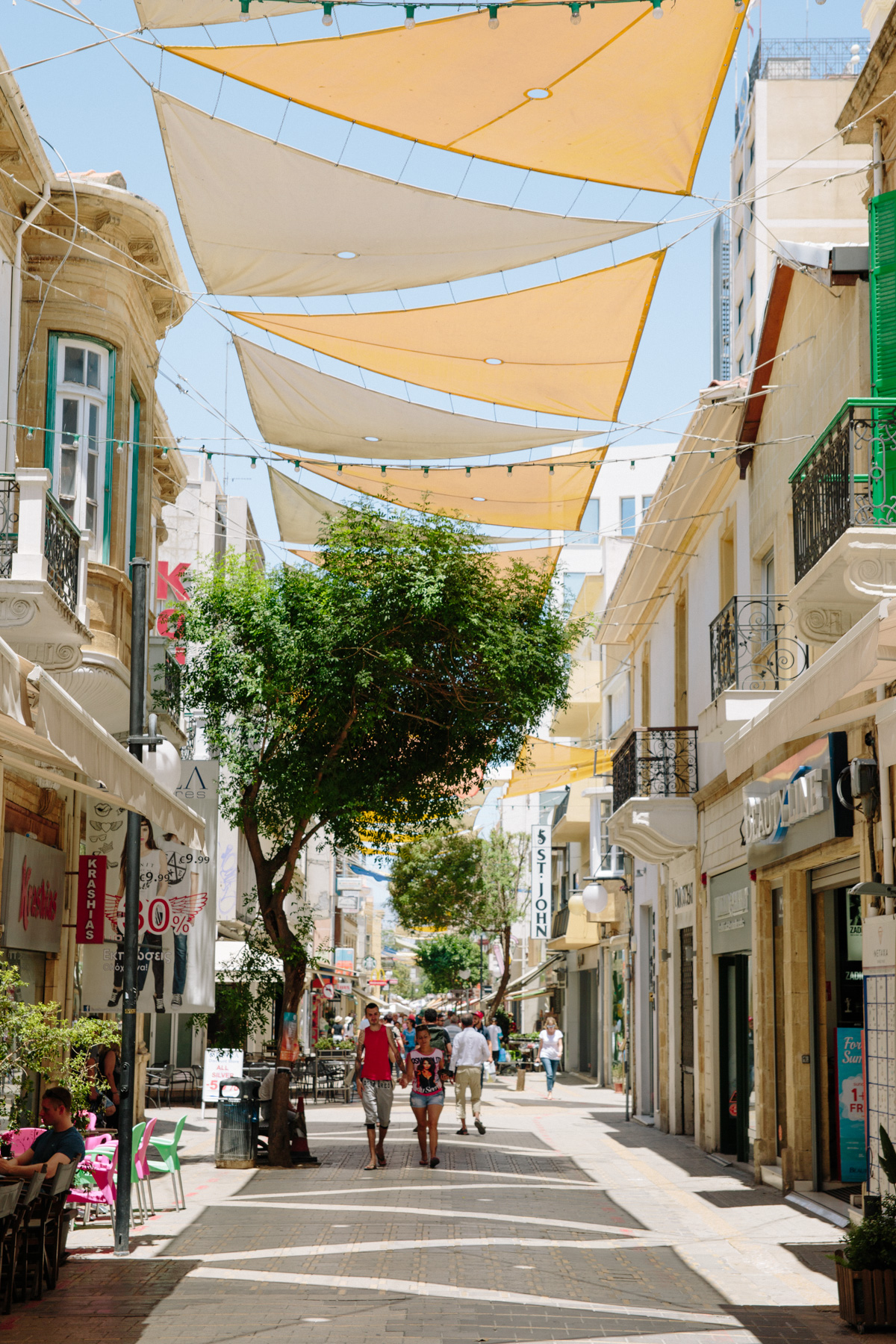As beautiful as this Mediterranean island is with its white sand beaches and pine tree forests, it has a dark and somber cloud hanging over it. Cyprus’ peace was completely disturbed in 1974 when many of its gorgeous structures and ancient monuments were destroyed by the Turkish invasion into Cyprus.
People were attacked and uprooted from the place they called home and the island was split into two parts.
Today, Cyprus isn’t one united island anymore, as it has been divided into the Republic of Cyprus and the self-declared Turkish Republic of Northern Cyprus.
How History Got Us Here
Cyprus’ history used to be beautiful and full of mythical stories but everything changed in 1974, when the island was divided into two parts.
But how did the island’s history lead to this drastic event?

The Fight For Enosis
It all started during the Greco-Turkish War, which started in 1919 and ended in 1922. Fortunately, Cyprus was spared this event because the island was under British rule. In 1923, the population exchange between Greece and Turkey took place, which simply worsened matters between the two nationalities. On home soil, the conflict started when Turkish Cypriots were opposed to the idea of uniting with Greece.
By 1925, Britain decided to declare Cyprus as a crown colony and the Greek Cypriots fought for enosis, which led to a riot in 1931, killing six civilians. During the riot, they also burned down Britain’s Government House in Nicosia, the capital city. The Greek Cypriots still tried to force the union with Greece and more than 2,000 of them were arrested. This led to harsh restrictions and military reinforcements by Britain.
During World War II, the Greek Cypriots decided to put their fight for enosis on hold, and in 1946, the British government made a decision that would have a significant impact on Cyprus. They announced their plan to form a Consultative Assembly and they allowed the exiles of 1931 were allowed to return to Cyprus.
The Greek Cypriot military had the opposite reaction than expected by the government as they were angry that their struggle for enosis still wasn’t on the table. They refused to form the assembly and the Turkish Cypriots were still strongly against the idea of enosis. By 1954 the Turkish government joined forces with the Turkish Cypriots in the fight against enosis and the UN decided to try and ignore the problem. The UN’s reaction caused the worst riot that Cyprus has seen since 1931.
Taksim and Cyprus’ Independence
In 1955, when the Greek Cypriots tried to push for enosis again, the Turkish Cypriots decided to implement the policy known as Taksim. Taksim was the process of dividing the island into two parts in an effort of trying to protect the Turkish Cypriots’ interests.
In 1960, Cyprus finally gained its independence, with only a few areas totaling up to 256 square kilometers remaining in their sovereignty.
Bloody Christmas
Shortly after, the two communities were already butting heads about taxation and the creation of individual municipalities. The disputes were still causing problems when the communities in Nicosia started fighting in 1963, on the day that’s now known as Bloody Christmas. The fighting got worse and spread like wildfire across the island, resulting in the deaths of 364 Turkish Cypriots and 174 Greek Cypriots. Plus, more than 25,000 Turkish Cypriots were displaced.
A peacekeeping force was implemented by the Security Council and an offer to give Turkish Cypriots minority rights was declined. Then, in 1967 a coup d’état in Greece put a military administration in power. Only a few months passed when Turkish Cypriot villages were attacked and 27 people were killed. Turkey responded by bombing the Greek Cypriot forces.
The Turkish Invasion
In July 1974, Turkey decided to invade Cyprus after Britain declined an invitation for joint action but they had limited forces. This caused Greek Cypriots to occupy their enclaves, which then led to Turkish Cypriots securing a corridor that connected the Northern coast with Nicosia.
In August of the same year, Cypriot representatives met for talks and the Turkish Cypriots demanded that they be geographically separated from the Greek Cypriots. Their request was denied and they attacked for a second time. There were thousands of casualties and in the end, the area between the two communities was declared a UN-administered buffer zone.
The Green Line: More Than Just a Buffer Zone

Right down the middle of Cyprus, there’s a green line controlled by the UN that separates the two parts of the island. The line is known as the United Nations Buffer Zone. On some parts of the island, the border is lined with green barrels and a strong military presence. But what’s the deal with this literal and figurative line?
There are many crossing points that opened over the years, which means that locals can travel freely between the two sides. These crossings typically close during political unrest or when there’s a health crisis on one of the sides. Just be careful because there are many incidents that take place at the various crossing points.
If you’re an international visitor, you’ll need your passport to cross the line. The line is open 24/7 and you can travel between the two sides at any time and as many times as you want. There are some customs regulations in place, which can affect the type and amount of goods that you’ll be able to take to the other side.
Two Capitals, Two Narratives: Nicosia Divided
Nicosia, or Lefkosia, is the capital city of Cyprus. However, what makes this capital city unique is that it’s the only divided one in the world. That’s right, the Green Line runs right through this city and while it used to be one city, things are now vastly different on both sides.
The side of Nicosia located in the South side is more European and commercialized than the Northern side. The city is more focused on business and tourism and it also has a much larger population. On the Northern side, there are many more market stalls where the Turkish Cypriot locals sell everything from socks to gadgets.

Social and Cultural Impacts: An Island Apart
The division of Cyprus has had a significant impact on the people, places, and culture of the island. Even the economy has taken a knock as many investors and governments choose not to acknowledge Northern Cyprus due to the fear of more unrest.
The historical names of buildings, streets, cities, and structures in the Northern part of Cyprus have been changed to accommodate the Turkish culture.
Even newspapers and other news outlets have had a complete overhaul, from the names to the information that they send out. Basically, all Greek traditions and cultural aspects of this part of the island were discarded, and Turkish and Islamic traditions were implemented.
Traveling in Divided Cyprus: What You Need to Know
Cyprus remains one island and it always feels like one is missing out when only visiting one side. If you’d like to visit both sides of the island, there are a few things to keep in mind. Here are some tips:
- The Euro is used in the South, while Northern Cyprus uses the Turkish Lira. However, most establishments accept both currencies.
- People in the South speak Cypriot Greek and people in Northern Cyprus speak Cypriot Turkish.
- You should always drive on the left side of the road in Cyprus.
- Type G sockets and plugs are used in Cyprus.
- Non-EU visitors need a 3-month passport while EU visitors need a passport that’s valid for the duration of their stay.
- You don’t need a visa to visit Cyprus if you’re from the UK, the EU, Australia, the US, or Canada. If you’re staying longer than 90 days, you need to get a registration certificate.
Possible Futures: Reunification, Partition, or Status Quo?
There really is no telling what the future for Cyprus holds. Will things unravel and lead to a full-on war, will things stay exactly the same for centuries to come, or will Cyprus become one again with a beautiful reunification?
The truth is that it would take a lot to unify the two sides of Cyprus, especially since more than 5 decades have passed and the situation hasn’t changed.
However, if the two parties strengthen their relationship in trade and travel, or even just try to work together when it comes to the environment, things can end up looking slightly better in the coming years.
Cyprus Divided, But Not Forgotten
Cyprus may be divided, but it remains a beautiful island with some of the world’s most gorgeous churches and ancient structures. Before you think of the island as a war zone, think of its natural beauty and potential.
Think of the historical events that led to the invasion and the eventual division. Remember to always stay open-minded and have empathy.
